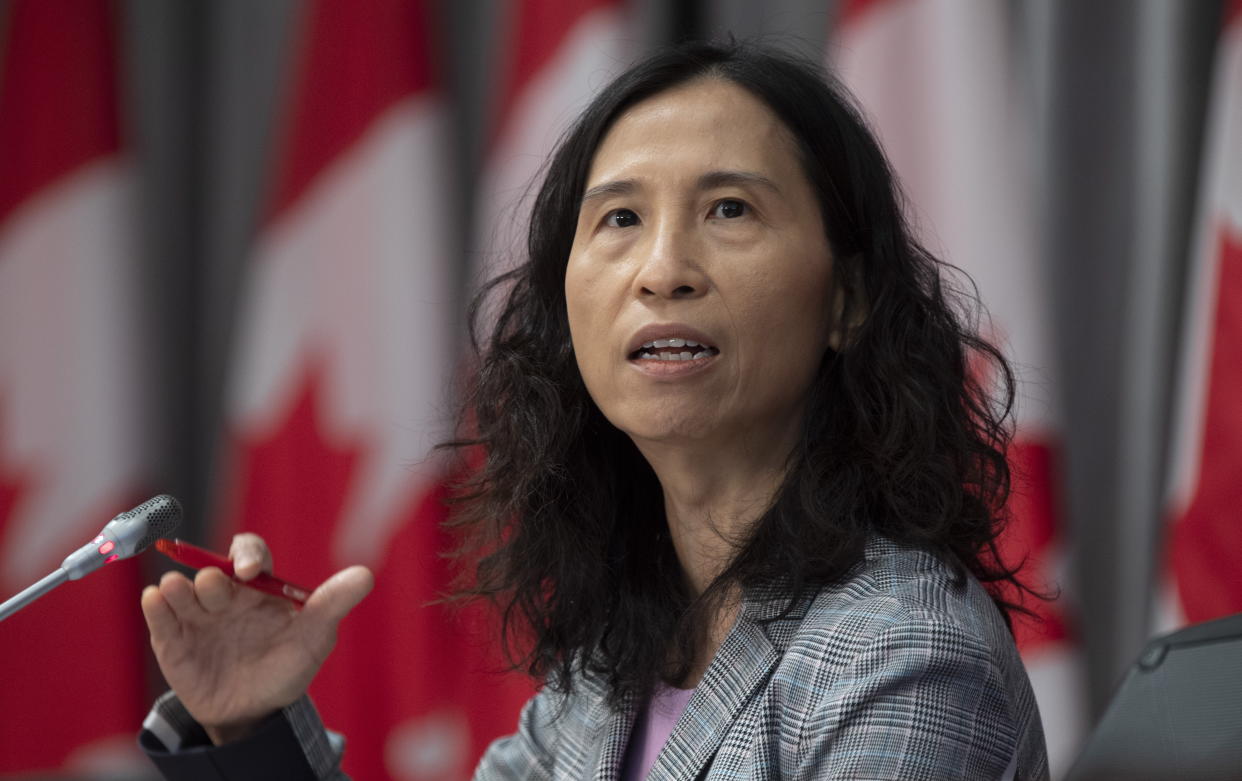From COVID-19 back to normal: What Canada can learn from other countries

When it comes to easing restrictions in the time of COVID-19, Canada isn’t “out of the woods” yet according to Prime Minister Justin Trudeau. The latest models show strict guidelines seem to be working, but it’s way too soon to get back to business.
Trudeau told reporters earlier this week that the country’s current framework doesn’t include specific measures as to when Canadians can return to the workplace and classroom, or visit with family and friends again.
“This framework will lay out the things that need to happen before taking any next steps,” Trudeau told reporters. “Restarting our economy will be gradual and careful, and will be guided by science,”
Chief Public Health Officer Theresa Tam said that while the spread is slowing down across the country, including in Quebec and Ontario, which have the highest number of cases, Canada must remain vigilant.
She said that chief medical health officers across the country are collaborating on getting the epidemic under control. This involves ensuring the capacity for testing, contact tracing, case isolation and quarantining.
“All those factors go into the way they make decisions,” she said. “We’re also collectively looking at when the time is right for each jurisdiction, what those initial measures could be in terms of easing back some of those public health measures.”
Different plans across provinces
Plans to reopen the economy and ease restrictions vary across the country. Last week, B.C.’s provincial health officer Dr. Bonnie Henry said she wanted to wait until there was "at least a couple of days" without any new COVID-19 cases before that could happen. Alberta hasn’t announced any plans to reopen its economy yet or change restrictions.
Saskatchewan will launch the first of a five-phase reopening plan on May 5, allowing medical services like dentists and chiropractors to go back to work, while on May 15, low-risk outdoor activities like camping and fishing will be allowed. Non-essential stores and salons can open their doors on May 19.
Manitoba said it would unveil its plans next week, but didn’t give a date. Ontario announced last week its three-phase plan but didn’t release exact dates as to when that will happen. Quebec stated that elementary schools and daycares will reopen on May 11 in Montreal and May 19 elsewhere in the province, but that high schools, colleges and universities won’t reopen until September.
Newfoundland and Labrador and Nova Scotia have both recently announced there were currently no plans to reopen the economy or lessen restrictions. New Brunswick started to scale back on physical distancing measures last week after one full week with no reported cases of the virus. As of May 1, Prince Edward Island will start easing certain restrictions, including allowing elective surgeries and several outdoor recreational activities.
In the territories, Yukon’s plan for reopening is under development but won’t be ready until late May. Restrictions will continue in the Northwest Territories for another month or so. While there have not been any confirmed cases of the virus in Nunavut, there are currently no plans to reopen the economy.
How the world is re-opening
Around the world, countries are taking different approaches to gradually lift restrictions and slowly reopen economies. Parts of Europe, like Norway, Switzerland, Germany and Iceland have started easing constraints.
In Spain, many non-essential workers returned to work after Easter weekend, a month after the country declared a state of emergency. Italy is in its first phase of a three-phase plan to reopen, allowing places like bookshops and children’s retail stores to get back to business. However, areas like Lombardy and Veneto, which were hardest hit by the virus, remain closed.
Meanwhile, some countries, like New Zealand and Australia, have exit strategies in place, with specific timelines as to how and when to ease out of lockdown. In China, where the virus was first discovered and is now receding, factories have started to reopen again.
What Canada can learn
One expert says that despite what’s happening in the rest of the world, Canada won’t know when the best time will be to ease back into the life we used to know, until there’s widespread testing of all levels.
“Until we get a whole lot of testing done, we’re not going to really know the dynamics or hierarchical curve of the pandemic in Canada,” says Ronald Labonte, a professor in the School of Epidemiology and Public Health at the University of Ottawa. “It’s a hard one to call.”
Labonte says the type of testing that should be widespread is that which finds the presence of infection, even in people who might be asymptomatic. Antibody testing, which shows if a person has built antibodies as a result of already being infected, have not been approved by Health Canada, since it hasn’t been proven to be completely accurate.
Labonte says when it comes to other countries' approach to the virus, Canada should observe the results rather than follow their leads.
“The more testing we do, the sooner we’ll be able to have a better sense of when it is wise to start to open and how to do that in steps and stages,” he says. “Because we’ll probably get another wave in the fall.”
Another aspect that is being considered worldwide, beyond the medical or clinical side of the pandemic, is the extent of the severity the economic fallouts will have as a result of the lockdown. Labonte suspects that will take an even more devastating toll on many.
“The way in which that’s imploded on an already fragile, global economy, and how that’s going to affect people’s health, will inevitably prove to be much greater than the health impacts of the virus itself,” he says.



